Empowering Agile Teams Through Product Vision
Explains why agile teams need a clear understanding of product vision and strategic goals to boost alignment, ownership, decision-making, and …
Drive long-term success with Agile Strategy. Align vision, execution, and adaptability to deliver continuous value.


Agile Strategy is a comprehensive approach that aligns an organisation’s vision with its execution and adaptability, ensuring that teams can deliver value consistently and sustainably. It transcends individual practices or frameworks, focusing instead on the systemic integration of agile principles across the organisation. This strategy emphasises the importance of creating an environment where teams can respond to change, innovate continuously, and maintain a clear focus on customer needs.
By fostering a culture of collaboration and transparency, Agile Strategy enables organisations to break down silos and enhance cross-functional teamwork. It encourages the use of metrics and feedback loops to inform decision-making, allowing teams to adjust their approaches based on real-time data. This adaptability is crucial in today’s fast-paced market, where the ability to pivot quickly can determine success.
Moreover, Agile Strategy is not merely about implementing agile practices; it is about embedding agility into the organisational DNA. This long-term perspective ensures that agility is not a one-off initiative but a sustained capability that drives ongoing improvement and value delivery. By prioritising alignment between strategic goals and operational execution, organisations can navigate complexity and uncertainty more effectively, ultimately leading to enhanced customer satisfaction and business resilience.
Explains why agile teams need a clear understanding of product vision and strategic goals to boost alignment, ownership, decision-making, and …
Explores how rigid, hierarchical structures hinder organisational agility and offers practical strategies for shifting to decentralised, empowered, …
Empowering teams to adapt requirements based on user feedback is key to true agility. Learn why backlog updates and team engagement drive better, …
Immersive learning helps aspiring agile leaders overcome cultural barriers by providing time, practical experiments, and peer feedback to drive real …
Explains how Agile teams can measure and improve Time to Market using key metrics like lead time, cycle time, and time to fix to deliver value to …
Copying scaled agile frameworks fails because each business needs a tailored, evidence-based approach to agility that fits its unique culture, …
Learn how to turn scope creep into an advantage by adopting Agile methods, focusing on value delivery, and adapting to changing requirements in …
Explores what traditional organisations must change, beyond adopting Agile tools, to achieve true agility, cultural transformation, and sustained …
Evidence-based management uses data-driven decisions to help organisations achieve business outcomes, adapt to market changes, and maximise value …
Adapting based on evidence, not assumptions, through inspection and transparency.
Compares Satya Nadella’s and Steve Jobs’s leadership, highlighting Nadella’s agile approach that fosters innovation, decentralised decision-making, …
Scrum can drive organisational change, not just product features, by using backlogs, teams, and feedback to enable real, evidence-based agility across …
Learn about Scrum.org’s new PAL-EBM training, which helps leaders use evidence-based management and custom metrics to align teams with organisational …
Company as a Product (CaaP) is an organisational strategy that treats the entire company as a continuously evolving product, rather than a static …
Agentic Software Delivery is a strategy for continuously achieving business outcomes through the deliberate integration of autonomous AI agents, human …
A strategic approach to improving the flow of value through an organisation, optimising efficiency, reducing waste, and aligning work with customer …
Agentic Agility is the ability for humans and AI to take intentional, adaptive action within socio-technical environments, enabling continuous …
Identifies seven common Agile pitfalls, quick fixes, backlog overload, resource focus, lack of accountability, blame, imitation, and pride, and offers …
Guidance for 2023: Succeed by clarifying strategy, boosting product development, investing in people, and using agile methods to gain competitive …
Successful companies thrive by creating unique ways of working, not by copying frameworks. Tailor your approach to fit your organisation’s culture, …
Compares agile product development and waterfall project management, highlighting differences in decision-making, delivery, customer collaboration, …
Enable Business Agility to rapidly adapt, innovate, and deliver value in an ever-changing market.
Align strategy with execution through Portfolio Management. Prioritise investments, optimise value streams, and drive organisational agility.
Transform your definition of done into a strategic advantage, deliver real value, reduce risk, and drive business impact with every sprint.
Agnostic Agile is a movement that promotes ethical, context-driven agility by prioritising principles over rigid frameworks. Championed by thought …
Explores how organisations can scale teams to boost innovation while avoiding bureaucracy, focusing on empowerment, streamlined processes, and agile …
Many companies mistake adopting Agile frameworks for true agility, but real success comes from customising ways of working to respond quickly to …
Explores how Agile transformed product management by enabling shorter release cycles, faster feedback, continuous delivery, and a stronger focus on …
Explores how hypothesis-driven engineering helps teams maximise product value by testing ideas, measuring outcomes, and learning from failure to guide …
Explores how Scrum Masters and Product Owners balance leadership, authority, and team autonomy to ensure accountability, effective self-management, …
Compares dictatorship and democracy in Agile leadership, highlighting the need to balance clear direction with team collaboration for better decisions …
Explains how focusing on isolated improvements in governance can harm overall organisational success, and offers strategies for integrated, …
Explains how Scrum supports customer acquisition and retention in competitive markets by enabling rapid delivery, feedback, and continuous …
Explores the US Department of Defence’s shift from traditional waterfall delivery to lean-agile methods, highlighting new procurement rules and the …
Explains the key accountabilities, skills, and behaviours required for a Scrum Product Owner, including hiring trends, role requirements, and …
Explores why true organisational agility needs more than Agile development, highlighting the importance of continuous delivery, quality, and removing …
Explores why special sprints like Sprint Zero or hardening sprints undermine Agile by delaying work, increasing risk, and reducing continuous delivery …
Explores how competence, collaboration, and agile philosophies drive high-performance software delivery, focusing on business value, continuous …
Explores effective Agile transformation by empowering teams, improving collaboration, focusing on value delivery, and fostering continuous improvement …
Delivering usable, working products frequently is key to reducing risk in Agile. Focus on feedback, automation, and lean practices over excessive …
Explores why focusing on value delivery and psychological safety leads to better Agile team outcomes than fixating on estimates, output metrics, or …
Explores common causes of chaos in Agile teams and offers practical strategies to improve alignment, communication, and collaboration for better team …
Explores the difference between adopting agile practices superficially and truly embracing agile values, highlighting the need for deep organisational …
Early agile transformations often failed due to top-down decisions, lack of team involvement, and misalignment between leadership and those doing the …
Explores how Agile’s true value lies in delivering outcomes and adapting to change, not just following rituals or procedures, and highlights the need …
Explains how evidence-based management helps Agile teams use data and key metrics to measure progress, make informed decisions, and drive continuous …
Explores how silence in agile teams signals disengagement, and offers strategies to boost stakeholder participation, open communication, and effective …
Learn practical agile leadership skills, foster team alignment, and drive cultural change with Scrum.org’s workshop to support agile transformation …
Explores why Agile fails without addressing systemic issues, highlighting the need for organisational change, meaningful metrics, and the courage to …
Learn how to build a compelling business case for agile adoption by aligning benefits with key metrics, stakeholder goals, and inclusive change …
Learn how to track, manage, and optimise product development costs by empowering teams with financial awareness, key metrics, and continuous …
Explores how patience and trust foster effective Agile teams, support learning from failure, prevent blame culture, and enable innovation through …
Learn how to reduce chaos in Agile teams by improving alignment, setting clear goals, fostering open communication, and using visual tools for better …
Explains the risks of using say-do metrics in Agile, highlighting how they encourage vanity metrics, harm psychological safety, and shift focus from …
Explains how agile practices help teams manage complexity, adapt to change, and deliver value faster in modern product development, compared to …
Empowering teams with financial insights boosts ownership, informed decision-making, and ROI by aligning daily work with business goals through …
A great agile consulting outcome enables organisations to adapt quickly to change, fostering resilience, decentralised decision-making, and empowered, …
Explains how Product Owners can replace traditional project management with vision, value, and validation to guide teams, deliver real value, and …
Explains why product ownership and product management are deeply connected in Scrum, clarifying their roles, focus on value delivery, and the need for …
Strategies to keep users engaged and reduce churn through continuous value delivery.
We partner with businesses across diverse industries, including finance, insurance, healthcare, pharmaceuticals, technology, engineering, transportation, hospitality, entertainment, legal, government, and military sectors.

Xceptor - Process and Data Automation

Milliman

Ericson

Alignment Healthcare

Boeing

Big Data for Humans

Graham & Brown

Sage

New Signature

Freadom

Philips
Boxit Document Solutions

Qualco

ProgramUtvikling

SuperControl

Slaughter and May

Bistech

Teleplan

Ghana Police Service

Department of Work and Pensions (UK)

New Hampshire Supreme Court

Royal Air Force

Washington Department of Enterprise Services

Washington Department of Transport

DFDS

Bistech

Flowmaster (a Mentor Graphics Company)

Teleplan

Lockheed Martin

Microsoft